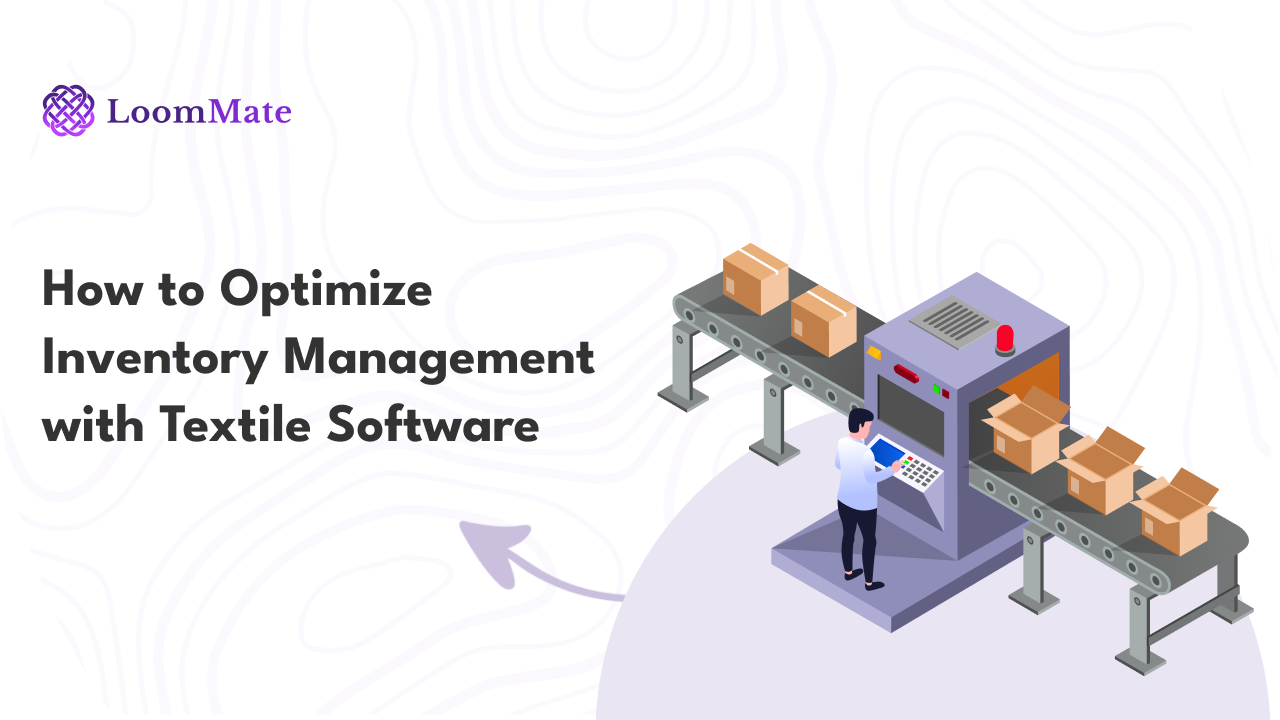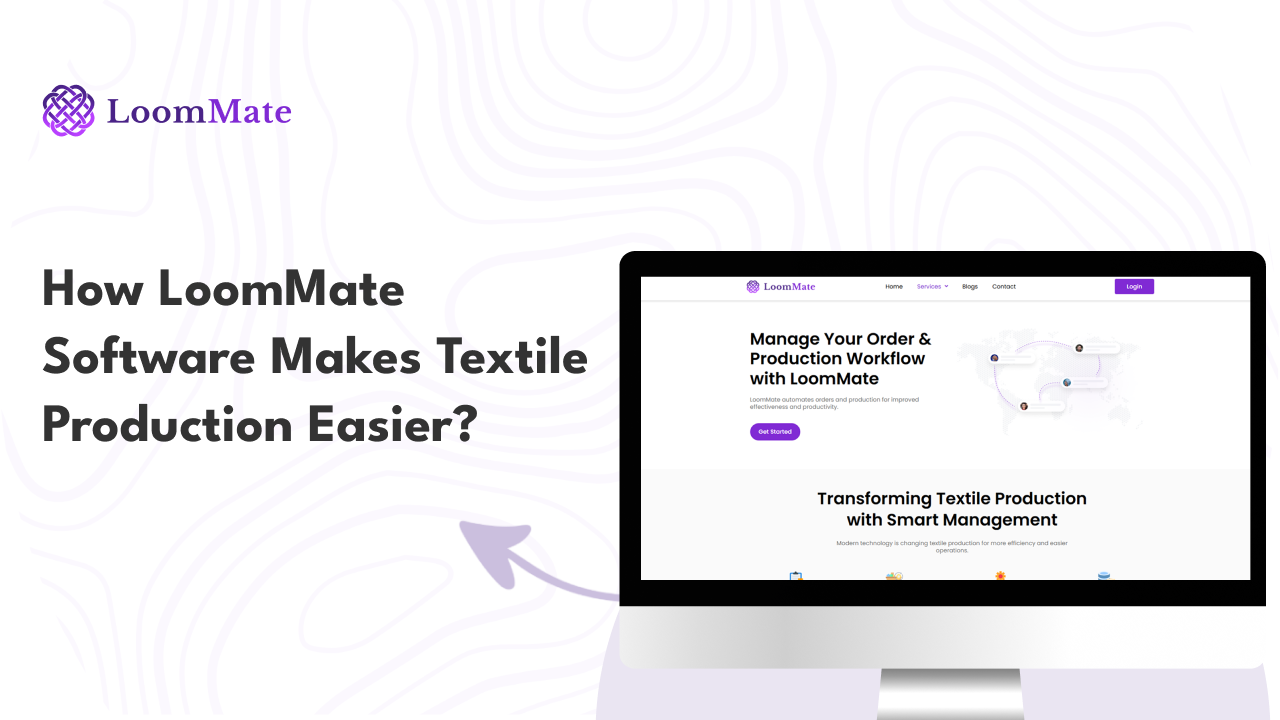Why Order Management Software is Vital for Growing Textile Brands
A successful firm in the textile sector is determined by tracking production, managing orders from clients, and ensuring on-time delivery. Orders rise in accordance with brand expansion. Manually handling them becomes difficult and time-consuming. Order management software may assist with this. Textile companies can effectively handle all order-related activities with the help of an effective system. Each stage of the process, from order entry to delivery, can be tracked and managed. This reduces mistakes and increases accuracy. The following article will address the importance of order management software for growing textile firms. We’ll look at the main characteristics and benefits associated with these systems. What Is Order Management in the Textile Industry? Textile Order management software is the process of receiving, tracking, generating, and shipping customer orders. Managing fabric types, sizes, designs, client information, delivery dates, and payment statuses are every aspect of the textile industry. Without an effective system, companies are frequently faced with issues such as incorrect messages, lost orders, delivery delays, and inadequate team communication. These issues might lower company growth and adversely affect customer satisfaction. Why Manual Order Management Fails in the Long Run Small textile companies frequently handle orders using paper-based records, WhatsApp, and Excel sheets. This strategy decreases efficiency as the amount of customers and orders increases. Here are a few common challenges: These problems may result in lost revenue and complaints from customers. Businesses want a scalable and reliable digital solution to prevent this. Benefits of Using Order Management Software 1. Centralized Order Information For a textile company, an order management system maintains record of all order information in one location. The delivery crew, production unit, and sales team can now obtain real-time updates as a result. Everyone is in accord and coordination improves as a result. 2. Real-Time Order Tracking In the textile sector, order tracking is essential for updating clients and avoiding delays. Every order can be tracked from placement to delivery utilizing software. If an issue does occur, it can be identified and resolved fast. 3. Error Reduction Manual handling increases the prospect of data getting into mistakes. By automating the process, an automated system lowers these errors. This ensures that the right products are sent to the right consumers. 4. Faster Order Processing The process of getting and finishing orders is speeds up by software. Repeated orders can be placed using templates. The payment and delivery status can be updated automatically. It allows the company to respond to client requirements more quickly. 5. Improved Customer Satisfaction Customers are happy when the ordering process is quick and easy. Customers are more likely to come back when goods are made on schedule and correctly. Long-term partnerships are made easier by it. Read More: How LoomMate Software Makes Textile Production Easier | LoomMate How Textile Order Management Software Works Step 1: Order Creation The sales team uses the software to create a new order. Delivery dates, product specifications, and all customer information are included. Step 2: Approval and Processing The production team obtains the order after it has been reviewed. The production schedule and material requirements are provided by the software. Step 3: Production Tracking The order status is updated by the production team at each stage. This helps managers in tracking advancement. Step 4: Dispatch and Delivery After manufacture is finished, the order is packaged and shipped. The customer gets informed and the delivery status is updated in the system. Step 5: Payment Tracking Payment adjustments are also documented. The accounting staff has access to credit information, payments that are partial, and outstanding amounts. Why LoomMate Is a Trusted Choice for Textile Brands The textile industry is the target market for LoomMate. We are aware of the challenges experienced by buyers and producers of textiles. LoomMate offers an extensive order management solution, from tracking finished products to managing raw materials. LoomMate helps businesses manage textile orders efficiently. It includes features like: Its simple interface makes it easy for staff to learn and use. It also supports customization based on your business needs. Follow Us on: Facebook | Instagram | Pinterest | LinkedIn | Twitter Key Features of the Best Order Management Software for Textile When choosing software, look for the following features: 1. Custom Order Forms Every textile order is different. Flexible data entry, such fabric type, color, size, and delivery notes, should be available with the software. 2. Multiple User Access The system should be available to multiple departments that have different user roles. Accountability is thus guaranteed. 3. Alerts and Reminders Automatic notifications for unpaid bills, delayed deliveries, and waiting approvals enable improved follow-up. 4. Inventory Integration Inventory management should be integrated with the system. This helps to assess the availability of the necessary material before accepting orders. 5. Mobile Access Sales teams frequently operate in the field. Creating and altering orders on the go becomes easier with a mobile-friendly version or app. Common Mistakes to Avoid Avoiding these mistakes ensures you get the full benefits of your order management system. Conclusion As textile brands grow, handling orders manually becomes a bottleneck. Mistakes increase, delays become common, and customers get frustrated. To overcome these issues, an order management system for textile business is essential. It centralizes order data, automates communication, reduces errors, and helps in timely deliveries. This leads to better customer satisfaction and business growth. If you’re looking to improve order processing and reduce chaos in your textile business, consider adopting a textile order management software. Tools like LoomMate are built to support the unique needs of the textile industry. FAQs Q1. What is textile order management software? It is a software tool that helps textile businesses manage orders from entry to delivery, track status, and reduce errors. Q2. Can small textile businesses use order management systems? Yes. Even small businesses benefit from better control and faster order processing. As the business grows, the system can scale with it. Q3. What are the benefits of order tracking in textile industry? It helps in monitoring production stages, delivery timelines, and customer communication. This reduces delays and increases
Why Order Management Software is Vital for Growing Textile Brands Read Post »




